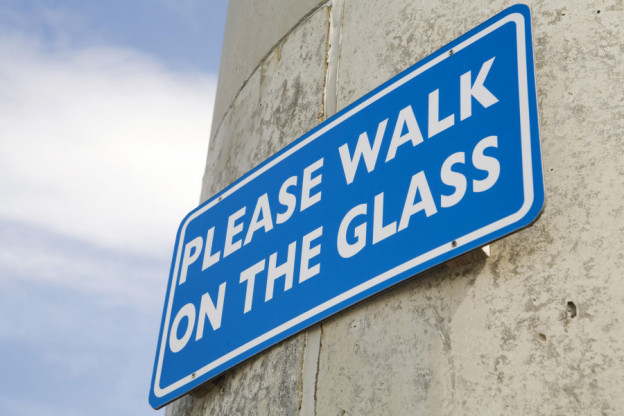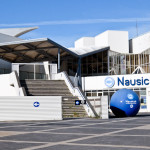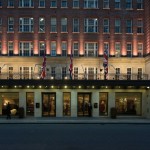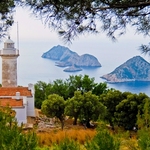Stuart Forster explores the National Glass Centre in Sunderland, once the centre of glassmaking in Britain.
The United Kingdom’s National Glass Centre is in Sunderland, on the north bank of the River Wear. It is housed in an angular glass and steel building that opened in 1998. You can walk here from St Peter’s Metro station along Sunderland’s Riverside Sculpture Trail, which runs between Wearmouth Bridge and the city’s marina.
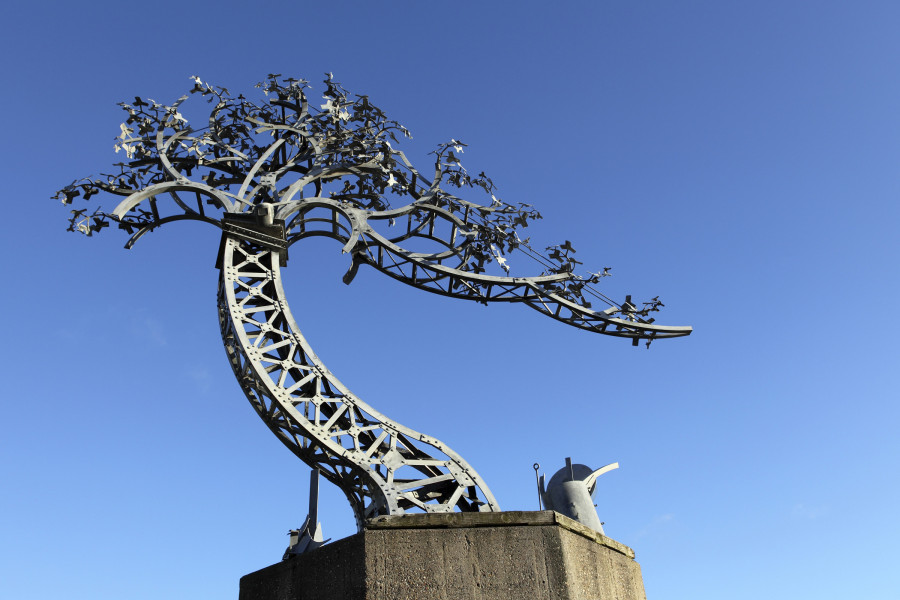
You may well wonder why Sunderland, in the north-east of England, is the location of the National Glass Centre rather than, say, London.
The north-east of England has long associations with glassmaking. The industry formerly provided many people in the region with employment.
The British Isles’ first stained glass windows were made for Wearmouth-Jarrow Priory, an internationally significant seat of learning which Benedict Biscop established by in the seventh century.
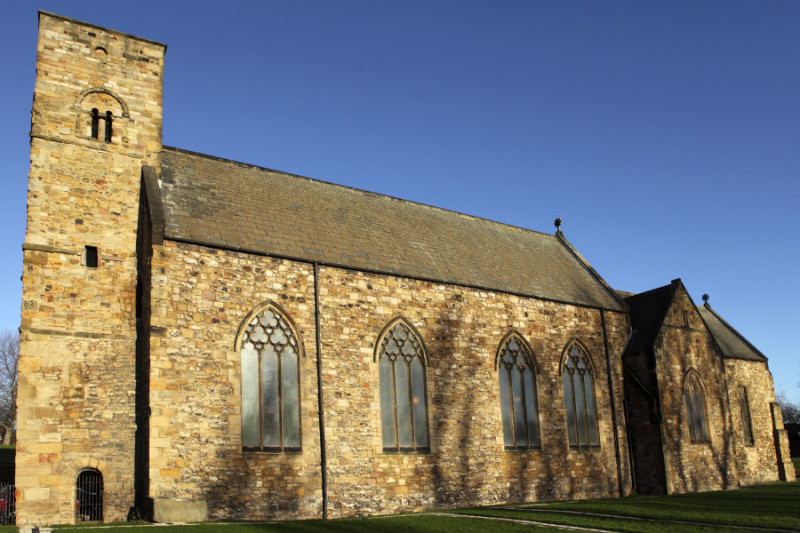

Nearby St Peter’s Church, built on land donated by King Ecgfrith of Northumbria in 673, was once a part of that monastic site. The Anglo-Saxon porch featuring detailed stonework sculptures survives. You can visit that historic place of worship by strolling five minutes from the National Glass Centre.
Major renovations and redevelopments were undertaken in 2013 to double the contemporary building’s exhibition and learning space.
Visiting brings an opportunity to view glass being shaped. Experts lead demonstrations of glass blowing, glass making on a lathe and flameworking demonstrations. Those demonstrations are held throughout the day. Sitting in the auditorium watching experts explain their craft, you’ll feel the warmth from the centre’s furnace, which is heated to 1,000°C.
An interactive audiovisual room helps convey the story of glassmaking in Sunderland. You’ll learn that the passionate rivalry between Sunderland and Newcastle – now most evident in matters relating to football – began at around the time of the English Civil War, due to tensions relating to glass production.
The centre’s displays mean you can learn how Sunderland became a major centre for the production of pressed glass during the latter decades of the nineteenth century. Companies such as Corning, Hartley-Wood and Pyrex operated factories on Wearside.

Sand, one of the raw materials in the glass making process, was brought to Sunderland by ships that exported coal on their inbound journeys.
You can also discover the myriad uses glass has been put to since humans first utilised naturally formed obsidian glass as arrowheads, approximately 7,000 years ago. Since then objects from teacups to optical fibre cables have been made using glass.
Work by leading international glass artists is displayed within the National Glass Centre’s secure exhibition space. The space means that the centre can cooperate with other museums and art establishments to exhibit precious artworks.
The centre is not merely a tourist attraction. The Ceramic Art Research Centre, University of Sunderland (CARCuos) is based within the centre, providing facilities for research students. This maintains Sunderland’s long association with glass production.
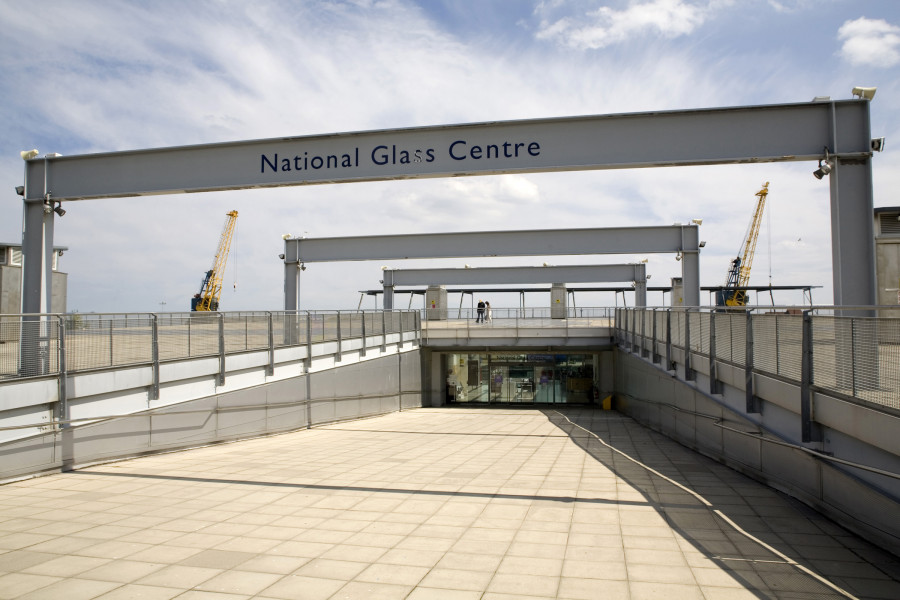
The centre aims to promote glass is all of its uses, ‘in design and technology and as a vehicle for artistic expression’.
Fittingly, glass plays a significant role in the National Glass Centre’s structure. In all, 3,250 square metres of the material are incorporated into the building. Large river-facing windows provide a sense of space and airiness for the sizable shop and Brasserie cafe-restaurant on the ground floor.
The centre’s roof is also made of glass. Signs encourage visitors to walk on the roof. Give it a go and don’t be nervous. The roof’s six-centimetre thick glass panels can support the weight of up to 460 people at any given time. Nonetheless, you still may think it’s unnatural to walk while looking down on people inside of the centre.
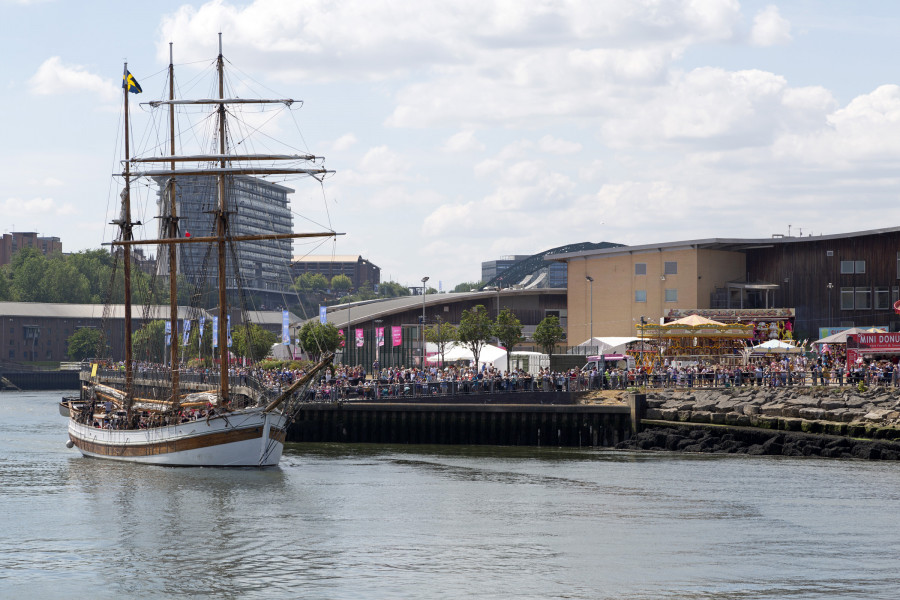
Parts of the centre’s bright, airy interior have a functional, industrial feel. The exhibition spaces make good use of natural light.
The design is notable for its energy-saving, environmentally friendly features. Heat from the furnaces on the ground floor is harnessed to warm the building. If the building ever becomes too warm — and, of course, there’s always sun in Sunderland — the air can be cooled by sinking it 10 metres into the ground.
All told, the centre can make an interesting place to spend a couple of hours.
All images (c) Stuart Forster
Tell me more about the National Glass Centre in Sunderland
The National Glass Centre is at Liberty Way in Sunderland. The attraction is free to visit and donations are welcomed. See the centre’s website for up-to-date information regarding opening times, exhibitions and events.
The shop on the ground floor of the National Glass Centre sells souvenirs plus artfully created glasswork.
The building also houses the Northern Gallery for Contemporary Art.
The National Glass Centre is a 20-minute walk from Sunderland AFC’s Stadium of Light. If you’re visiting the city to watch football why not combine a visit?
What to do in Sunderland
Discover more things to do and see on Wearside on the See it Do it Sunderland website.
Where to eat in Sunderland
The Glass Yard, the café-restaurant inside of the National Glass Centre, serves light bites, lunches and afternoon tea. Seats overlook the River Wear.
Getting to Sunderland
Grand Central operates direct rail service between London King’s Cross and Sunderland. The journey between the two cities takes from approximately three hours 30 minutes to a little over four hours.
Staying in Sunderland
The seafront Grand Hotel Sunderland, Lemonfield Hotel and Boar’s Head Boutique Hotel count among the city’s accommodation options. Lumley Castle Hotel in Chester le Street is also a very good option.

